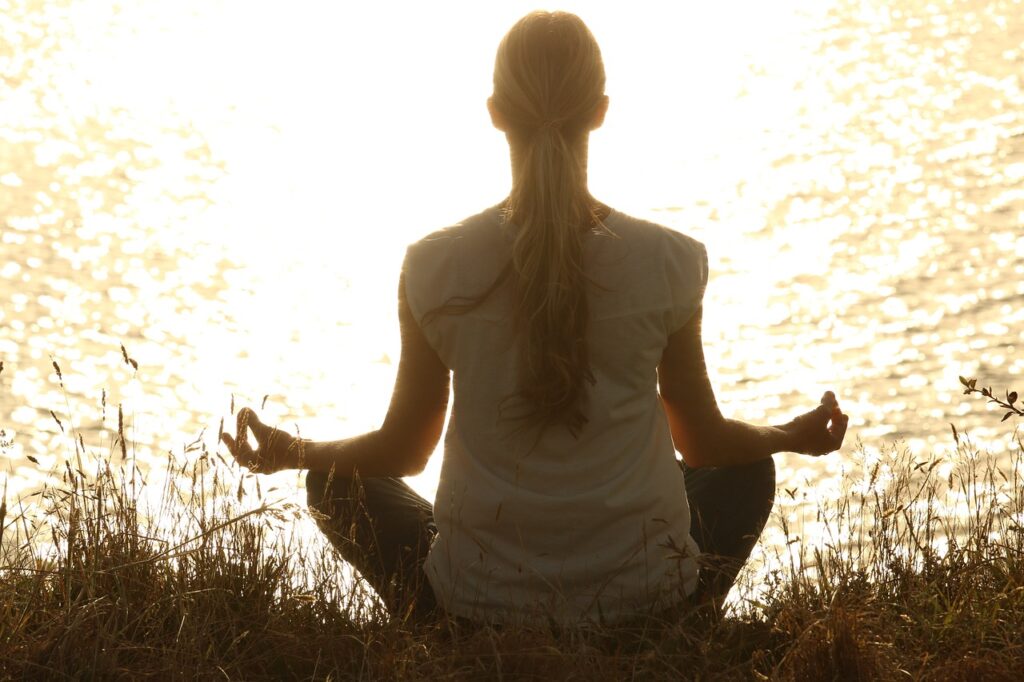If you’re interested in meditation and mindfulness, you’re not alone. According to the Centers for Disease Control and Prevention (CDC), meditation practice has increased significantly in recent years. However, it’s important to note that there are many different forms of meditation. Some involve stillness, while others involve movement. Some aim to clear the mind, while others focus on monitoring or manipulating thoughts and emotions.
One popular form of meditation is Transcendental Meditation (TM), which has gained attention from celebrities and social media. Despite its recent popularity, TM is not a new practice. So, what exactly is TM and how does it differ from other forms of meditation like mindfulness? In this article, we’ll explore the benefits of this technique and what you need to know to get started.
What Is Transcendental Meditation?
Transcendental Meditation (TM) is a technique of meditation that involves sitting comfortably and practicing for 15 to 20 minutes twice a day. It is a simple, natural, and effortless technique that has been passed down through generations. Maharishi Mahesh Yogi, a Hindu religious leader, was the most recent custodian of this knowledge in our generation and made it available by creating an organization and training teachers worldwide.
TM is different from other forms of meditation as it is not concerned with concentration or contemplation and does not require or favor any particular belief or philosophy. Anyone who can think can meditate. Unlike other meditation techniques that keep the attention on the surface, TM focuses on diving within and contacting the field of pure awareness.
In TM, a mantra is utilized in a very specific way. A mantra is a life-supporting sound that has no associated meaning but is known to be a vehicle for transcending. The proper use of this sound creates the right condition for the mind to move in the direction of greater happiness.
The general principles of TM include moving the mind inward to experience greater happiness, tapping into pure awareness, which can enhance creativity, energy, and intelligence, settling the mind, which results in settling the body, and subsequently returning to daily activity with a rich quality of pure awareness and as if the body has gained deep rest.
Whether you meditate on your own or follow a trained teacher in a guided session, TM differs from other forms of meditation, like mindfulness meditation, as you direct your focus on a mantra or sound rather than something like the breath, the body, the five senses, or a visualization.

Benefits of Transcendental Meditation
If you’re looking for a way to improve your mental and physical wellbeing, Transcendental Meditation (TM) may be worth considering. Practitioners of TM report a wide range of benefits, including improved sleep, increased creativity, greater self-awareness, and decreased anxiety.
According to experts, TM can help decrease stress, which can lead to improved mental and physical health. In fact, over 700 studies have documented the benefits of TM. One of the most significant benefits is its ability to lower high blood pressure and reduce stress. A systematic review of over 100 studies found that only the TM program had a statistically significant impact on reducing high blood pressure in hypertensive individuals.
In addition to its benefits for physical health, TM has also been shown to improve mental health. Scientific evidence shows that TM can help reduce anxiety, stress, and burnout. A small study of healthcare workers during the COVID-19 pandemic found that practicing TM was effective at significantly reducing chronic stress, anxiety, insomnia, and burnout over a three-month period.
TM has also been linked to lower rates of hospitalization and non-routine medical visits. A study conducted in 1987 found that those who practiced TM were hospitalized 56% less than those who did not practice. Additionally, TM is associated with reduced tobacco, drug, and alcohol use, as well as reduced rates of death, heart attack, and stroke.
Overall, TM appears to offer a wide range of benefits for both mental and physical health. If you’re interested in improving your wellbeing, it may be worth considering adding TM to your daily routine.

How to Start Practicing Transcendental Meditation
If you’re interested in learning Transcendental Meditation (TM), it’s important to note that it cannot be learned from a book. The delicate and precise nature of TM requires proper instruction and follow-up from a trained teacher. Here are the steps you can take to start practicing TM:
- Attend a free introductory session on TM, either in-person or online. These sessions are designed to provide an overview of the technique and its benefits.
- If you decide to move forward and learn TM, visit your local TM website or do an internet search for “transcendental meditation” plus the name of your city to find local programs.
- Navigate to the calendar on the website and choose from the available appointments for upcoming courses.
- Choose an appointment and schedule a brief, 15-minute “preparatory” meeting with the teacher. This meeting can be conducted by phone, Zoom, or in person.
- Personal instruction takes about 60 to 90 minutes and must be done in person, not online.
- Attend three follow-up sessions on three consecutive days, either in-person or online. These sessions are designed to ensure that you are practicing TM correctly and to answer any questions you may have.
Remember, the best way to learn TM is from a certified professional. By following these steps and learning from a trained teacher, you can start experiencing the benefits of this powerful meditation technique.
How Long Should You Practice Per Day?
To reap the benefits of Transcendental Meditation, it is recommended that you practice for 20 minutes, twice a day. This applies to adults, as suggested by Horwath. For children and teenagers, a shorter amount of time is recommended. The practice involves repeating a sound-based mantra twice a day for 20 minutes each time, which stimulates your chakras. It is important to dedicate yourself to this practice and make time for it in your daily routine.









